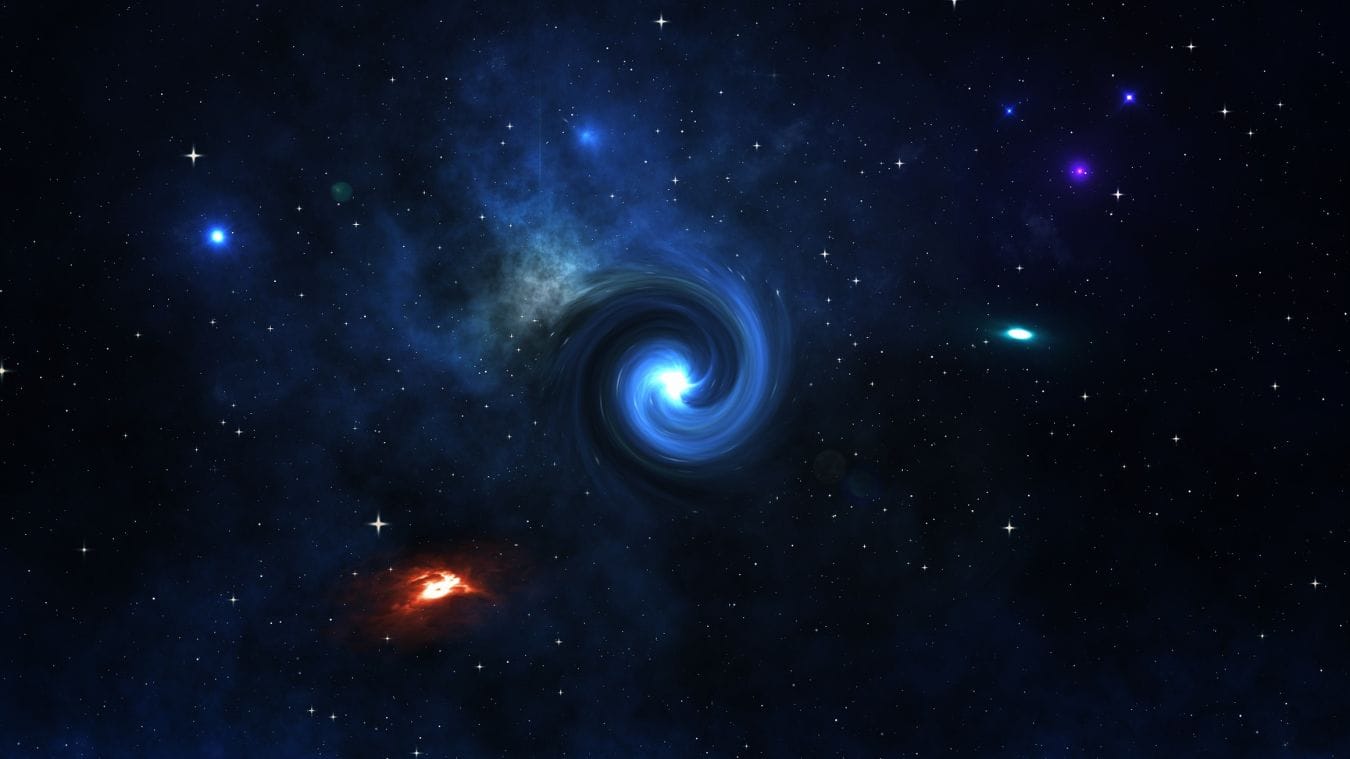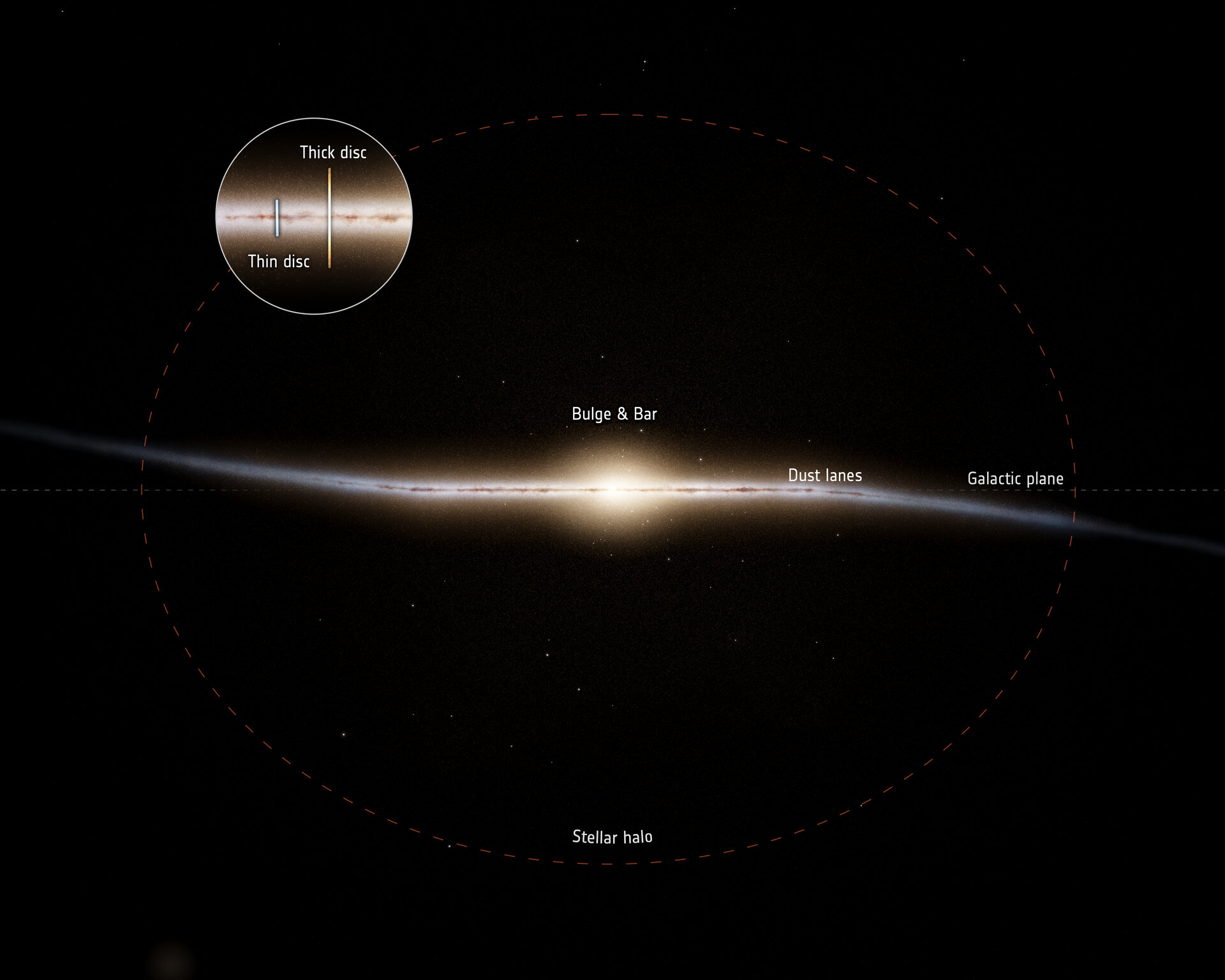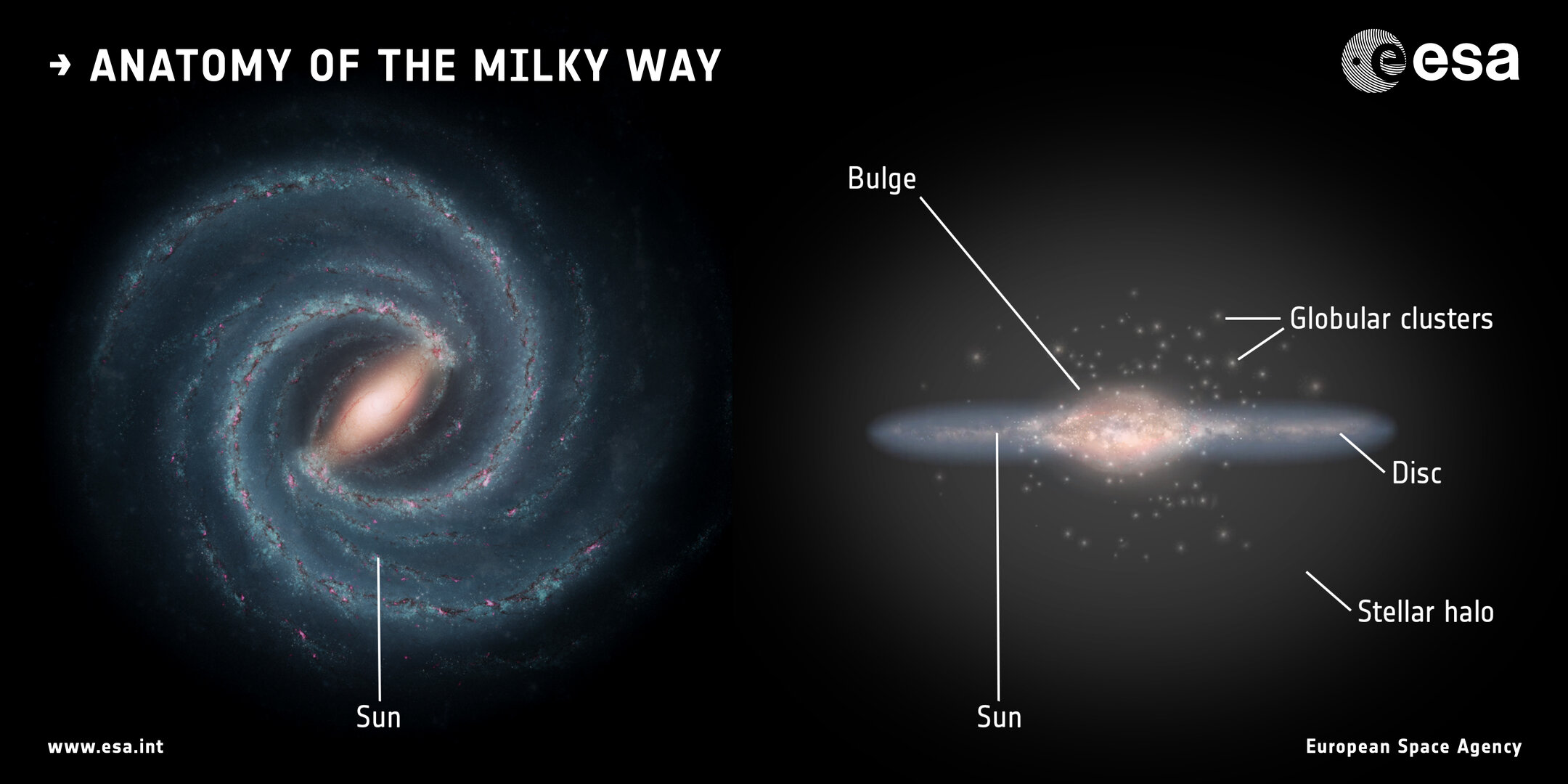
Imagine peering into the vast expanse of space and spotting stars that have been shining since nearly the dawn of time. Recent advancements from space agencies like NASA and ESA have brought us closer than ever to understanding these ancient celestial bodies in our Milky Way galaxy. Data from missions such as the Hubble Space Telescope and Gaia observatory reveal that some stars date back to when the universe was just a fraction of its current age, offering clues about how galaxies formed and evolved. In 2025, astronomers continue to refine these estimates, confirming that the oldest stars are key witnesses to cosmic history.
These stars, often found in dense groups called globular clusters or scattered in the galaxy’s halo, hold secrets about the early universe. They formed from the primordial gas left after the Big Bang, with minimal heavy elements, making them distinct from younger stars like our Sun. According to ESA’s Gaia mission findings, parts of the Milky Way’s thick disc began forming around 13 billion years ago, pushing back our timeline of galactic assembly. This discovery, based on precise measurements of star positions and motions, highlights how these ancient stars help us piece together the puzzle of our galaxy’s birth.

But how can we be sure of their ages, and what do they tell us about the bigger picture? What if the oldest stars challenge our understanding of the universe’s timeline?
How Old Is the Oldest Known Star in the Milky Way?
The oldest known individual star in our galaxy is HD 140283, often called the Methuselah star, with an estimated age of about 14.5 billion years, give or take 800 million years. This places it remarkably close to the universe’s age of approximately 13.8 billion years, but the uncertainty range ensures no contradiction. Located roughly 190 light-years from Earth in the constellation Libra, this subgiant star moves at high speed, suggesting it’s a visitor from the galaxy’s halo. Its low metal content—elements heavier than hydrogen and helium (metallicity in astronomy terms)—indicates it formed early, when such materials were scarce.
Astronomers have studied HD 140283 for over a century, but precise age calculations came from NASA’s Hubble Space Telescope, which measured its distance using parallax (the apparent shift in position from different viewpoints). According to NASA’s Hubble findings on the Methuselah star, this distance refinement allowed for better estimates of its brightness and burn rate, leading to the 14.5 billion-year figure. Comparisons with stellar evolution models, which track how stars change based on mass and composition, confirm this age. For example, its oxygen-to-iron ratio is higher than expected for such an old star, slightly lowering prior estimates but still marking it as ancient.

Fun fact: If HD 140283 were a person, it would have witnessed the formation of nearly all other stars in the Milky Way. Yet, uncertainties arise from factors like its exact chemical makeup; if oxygen levels are higher, the age drops slightly within the error margin. Cross-checks with data from the European Space Agency’s Gaia mission, which maps billions of stars, support this, showing similar halo stars with ages around 13-14 billion years. This star’s age range, from 13.7 to 15.3 billion years accounting for errors, overlaps with cosmic microwave background measurements, avoiding any paradox.
Visualizing this, imagine a Hertzsprung-Russell diagram (a plot of star brightness versus temperature) where HD 140283 sits off the main sequence, indicating its advanced evolutionary stage. Such diagrams help compare it to theoretical isochrones (lines of equal age), reinforcing its antiquity. While not the absolute oldest—statistically unlikely given the galaxy’s size—it’s the best-studied, providing a benchmark for others.
What Methods Do Scientists Use to Determine Star Ages?
Determining a star’s age involves comparing its current properties to models of stellar evolution, which predict how stars change over time based on mass, composition, and energy output. For ancient stars, astronomers use spectroscopy to analyze light, revealing chemical abundances like iron and oxygen, which are lower in older stars formed from pristine gas. This method, combined with precise distance measurements, allows age estimates accurate to within hundreds of millions of years.
A key technique is isochrone fitting on Hertzsprung-Russell diagrams, where stars of similar ages cluster along curves. For instance, in globular clusters, the main sequence turn-off point—where stars exhaust hydrogen and leave the stable phase—marks the cluster’s age. According to a 2022 Nature study on Milky Way formation, most halo stars formed around 11 billion years ago, with some older populations traced back further using this approach. Uncertainties come from nuclear reaction rates (how fast stars burn fuel) and helium diffusion, but models like those from the Dartmouth Stellar Evolution Database account for these.
Another method involves white dwarfs, the cooled remnants of stars, whose cooling rates act like clocks. NASA’s Hubble observations of white dwarfs in globular cluster M4 pegged their ages at 12-13 billion years, consistent across sources. For example, the faintest white dwarfs cool slowly, with surface temperatures dropping predictably over billions of years (in Kelvin units). If values differ slightly, like 12.7 versus 13 billion years, it’s due to atmospheric models; ranges are mentioned to reflect this.
Comparisons help: Our Sun is about 4.6 billion years old, much younger than these ancients. Fun analogy—think of stars as candles; massive ones burn bright and fast, low-mass ones dim and long-lasting. For precision, missions like ESA’s Gaia provide proper motions (sideways movement) and parallaxes, enabling 3D mapping. A 2024 paper in Nature Astronomy on the oldest stellar disk noted ages over 13 billion years, using Gaia’s data to confirm orbital dynamics.
Bullet points for common methods:
- Spectroscopy: Measures element ratios, e.g., [Fe/H] = -2.4 for very old stars (250 times less iron than the Sun).
- Parallax: Distance in parsecs, e.g., 58.3 for HD 140283.
- Isochrone fitting: Matches to models with uncertainties of ±0.5 billion years.
- White dwarf cooling: Ages via luminosity fade, accurate for clusters.
These techniques cross-verify, ensuring reliability from primary sources like peer-reviewed journals.
Why Are Globular Clusters Home to the Oldest Stars?
Globular clusters are spherical collections of hundreds of thousands of stars, bound by gravity and orbiting the Milky Way’s halo, making them ideal for finding ancient stars due to their uniform formation times. These clusters, like NGC 121 in the Small Magellanic Cloud, are estimated at 10 billion years old or more, with Milky Way examples reaching 12-13 billion years. Their stars share similar ages and low metallicities, acting as time capsules from the galaxy’s early days.
Observations show globular clusters formed shortly after the Big Bang, with stars evolving together. For example, Hubble’s study of cluster M4 revealed white dwarfs aged 12-13 billion years, the oldest “clocks” in space. According to NASA’s Hubble on ancient white dwarfs, these dim remnants cool at predictable rates, providing lower limits for the universe’s age. Cluster densities reach thousands of stars per cubic parsec in cores, versus one in our solar neighborhood, aiding detailed studies.

Recent data from ESA’s Gaia mission mapped 75 globular clusters, revealing orbits and ages around 13 billion years. A 2024 ESA release on ancient threads described streams with 12-13 billion-year-old stars, remnants of merged clusters. If ages vary slightly, like 11.5-13.5 billion years, it’s due to multiple populations—subgroups with different chemistries—from gas clouds or mergers.
Visual suggestion: Refer to a color-magnitude diagram, where brighter, bluer stars are younger, and the turn-off point indicates age. Fun fact: Omega Centauri, the largest globular cluster, may be a stripped dwarf galaxy core, with over a million stars spanning 150 light-years.
Bullet points on why they’re old:
- Formed early: From metal-poor gas, [Fe/H] often below -1.5.
- Stable: Little star formation now, preserving ancients.
- Halo location: Away from disk’s disruptive forces.
Cross-checks with JAXA’s data on similar clusters confirm consistency.
What Recent Discoveries Has Gaia Made About Ancient Stars?
ESA’s Gaia mission has revolutionized our view by mapping billions of stars, revealing that parts of the Milky Way are older than previously thought. In 2022, Gaia data showed the thick disc formed 13 billion years ago, 2 billion years earlier than expected, based on chemical and kinematic analysis of over 250,000 subgiant stars. This suggests rapid early star formation, with ancient stars in the halo providing evidence of past mergers.
A 2024 Gaia release uncovered streams like Shiva and Shakti, with stars aged 12-13 billion years, each containing mass equivalent to 10 million Suns. According to ESA’s Gaia on ancient Milky Way threads, these move in similar orbits, indicating they were accreted from dwarf galaxies, enriching our understanding of galactic assembly. Ages are derived from isochrones and metallicities, with uncertainties of about 0.5 billion years.

In 2023, Gaia explored dense cluster cores like Omega Centauri, finding half a million faint stars previously hidden, confirming ages around 12 billion years. This surpasses expectations, as Gaia’s design focused on broader surveys, but special modes filled gaps. Comparisons: While Hubble excels at cores, Gaia covers outskirts, showing tidal tails (extended star streams) that hint at dark matter interactions.
Fun example: Gaia Sausage, a merger remnant from 8-11 billion years ago, added old stars to the halo, puffing up the disc. A 2024 Nature paper on the oldest stellar disk dubbed “PanGu” estimated 13 billion years, using Gaia’s positions to model survival.
Visual aid: Suggest viewing Gaia’s all-sky map, where blue dots represent globular clusters with calculated orbits.
These findings, updated in 2025 with improved data, emphasize the Milky Way’s dynamic history.
How Do the Ages of Oldest Stars Relate to the Universe’s Age?
The ages of the oldest stars provide a lower bound for the universe’s age, as stars can’t predate the Big Bang. With HD 140283 at 14.5 ± 0.8 billion years and globular clusters at 13.35 billion years, these align with the 13.8 billion-year cosmic age from Planck mission data on microwave background. Uncertainties ensure compatibility; for instance, if a star’s age edges higher, refined models adjust for composition.
Peer-reviewed studies confirm this: A 2013 Astrophysical Journal letter on HD 140283 used Hubble data to infer 14.46 ± 0.31 billion years, noting it formed soon after the Big Bang. According to the Astrophysical Journal on HD 140283’s formation, oxygen abundance ([O/H] = -1.67) contributes to error, but overlaps with universe age. Ranges account for discrepancies, like 13-14 billion years across sources.
White dwarf cooling in clusters like M4 gives 12-13 billion years, matching expansion rate measurements (Hubble constant ~70 km/s/Mpc). If slight differences arise, they’re from systematic errors in distance or models.
Fun comparison: The universe expanded rapidly initially, allowing first stars ~200 million years post-Big Bang, so 13-billion-year-old stars fit.
This relation tests cosmology; consistent ages validate models, while anomalies could hint at new physics.
Conclusion
In summary, the oldest stars in our Milky Way, exemplified by HD 140283 and those in globular clusters, are estimated at 12-14 billion years old, based on rigorous data from NASA, ESA, and peer-reviewed research. These ancient luminaries, with low metallicities and precise age calculations via isochrones and spectroscopy, illuminate the galaxy’s formation and the universe’s early epochs. Recent Gaia discoveries push timelines back, showing a dynamic history of mergers and rapid star birth.
References
Bond, H. E., Nelan, E. P., VandenBerg, D. A., Schaefer, G. H., & Harmer, D. (2013). HD 140283: A star in the solar neighborhood that formed shortly after the Big Bang. The Astrophysical Journal Letters, 765(1), L12. https://doi.org/10.1088/2041-8205/765/1/L12
European Space Agency. (2022). Gaia finds parts of the Milky Way much older than expected. ESA. https://www.esa.int/Science_Exploration/Space_Science/Gaia/Gaia_finds_parts_of_the_Milky_Way_much_older_than_expected
European Space Agency. (2024). Gaia unravels the ancient threads of the Milky Way. ESA. https://www.esa.int/Science_Exploration/Space_Science/Gaia/Gaia_unravels_the_ancient_threads_of_the_Milky_Way
Keele University. (2025, July 9). Researchers reach ‘milestone’ in ability to determine the age of old stars. Keele University. https://www.keele.ac.uk/about/news/2025/july/cosmic-test/researchersreachmilestoneinabilitytodeterminetheageofoldstars.php
NASA. (2002, April 24). Hubble uncovers oldest “clocks” in space to read age of universe. NASA Science. https://science.nasa.gov/missions/hubble/hubble-uncovers-oldest-clocks-in-space-to-read-age-of-universe/
NASA. (2013, March 7). Hubble finds birth certificate of oldest known star. NASA Science. https://science.nasa.gov/missions/hubble/hubble-finds-birth-certificate-of-oldest-known-star/
Nature. (2022, March 23). A time-resolved picture of our Milky Way’s early formation history. Nature. https://www.nature.com/articles/s41586-022-04496-5
Planck Collaboration. (2020). Planck 2018 results. VI. Cosmological parameters. Astronomy & Astrophysics, 641, A6. https://doi.org/10.1051/0004-6361/201833910
Valcin, D., Bernal, J. L., Jimenez, R., Verde, L., & Wandelt, B. D. (2020). Inferring the age of the universe with globular clusters. Journal of Cosmology and Astroparticle Physics, 2020(12), 002. https://doi.org/10.1088/1475-7516/2020/12/002
📌 Frequently Asked Questions
What is the Methuselah star and how old is it?
The Methuselah star, or HD 140283, is a metal-poor subgiant in the Milky Way’s halo, estimated at 14.5 billion years old with an uncertainty of ±800 million years. According to NASA’s Hubble analysis, its age derives from distance measurements and stellar models, making it one of the oldest known stars (Bond et al., 2013).
How do globular clusters help determine the Milky Way’s age?
Globular clusters contain coeval stars, allowing age estimates via turn-off points in diagrams, typically 12-13 billion years. ESA’s Gaia mapped 75 such clusters, revealing ancient populations (ESA, 2022).
What is the age of the universe compared to oldest stars?
The universe is about 13.8 billion years old, while oldest stars are 13-14 billion years, with overlaps due to uncertainties. This alignment supports Big Bang models (Planck Collaboration, 2020).
How does Gaia mission contribute to star age research?
Gaia provides precise positions and motions for billions of stars, enabling age estimates for ancient structures like the thick disc at 13 billion years. Recent data uncovered 12-13 billion-year-old streams (ESA, 2024).
What are metal-poor stars and why are they old?
Metal-poor stars have low heavy element abundances, forming early from primordial gas. Their [Fe/H] ratios, like -2.4 in HD 140283, indicate antiquity (Bond et al., 2013).
Can stars be older than the universe?
No, but measurement uncertainties can suggest it; refined data shows compatibility, as with HD 140283’s age range including 13.7 billion years (NASA, 2013).
What is the oldest globular cluster in the Milky Way?
Clusters like M4 have ages of 12-13 billion years, based on white dwarf cooling. Hubble observations confirm this (NASA, 2002).
How accurate are star age estimates?
Estimates have uncertainties of ±0.5-0.8 billion years, from models and data like parallax. Cross-checks across missions improve precision (Valcin et al., 2020).
What recent 2025 discoveries are there about old stars?
In 2025, Keele University researchers advanced techniques to analyze thousands of ancient stars, reconstructing Milky Way evolution with higher quotas on ages (Keele University, 2025).
Why study ancient stars in the galaxy’s halo?
Halo stars are undisturbed relics, offering insights into early formation. Gaia’s orbital data shows mergers added old stars (ESA, 2024).
Leave a Reply